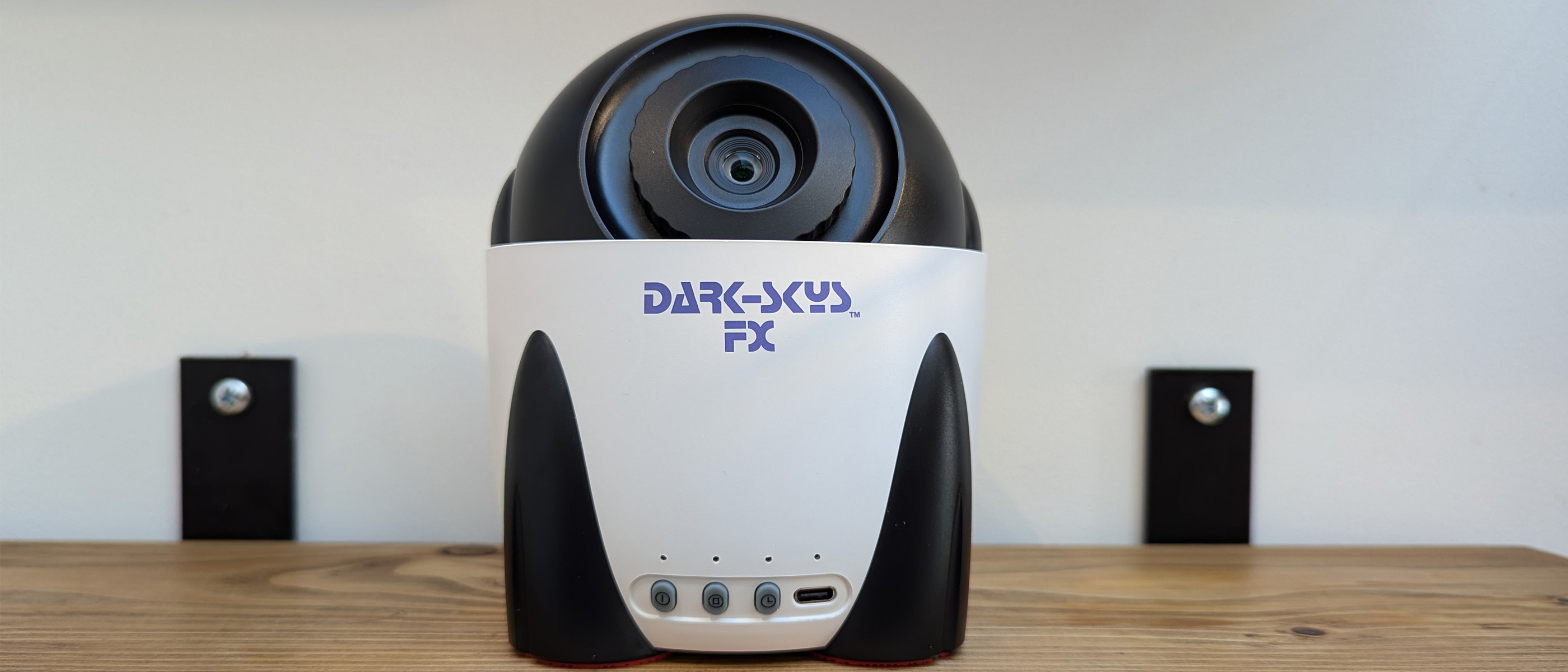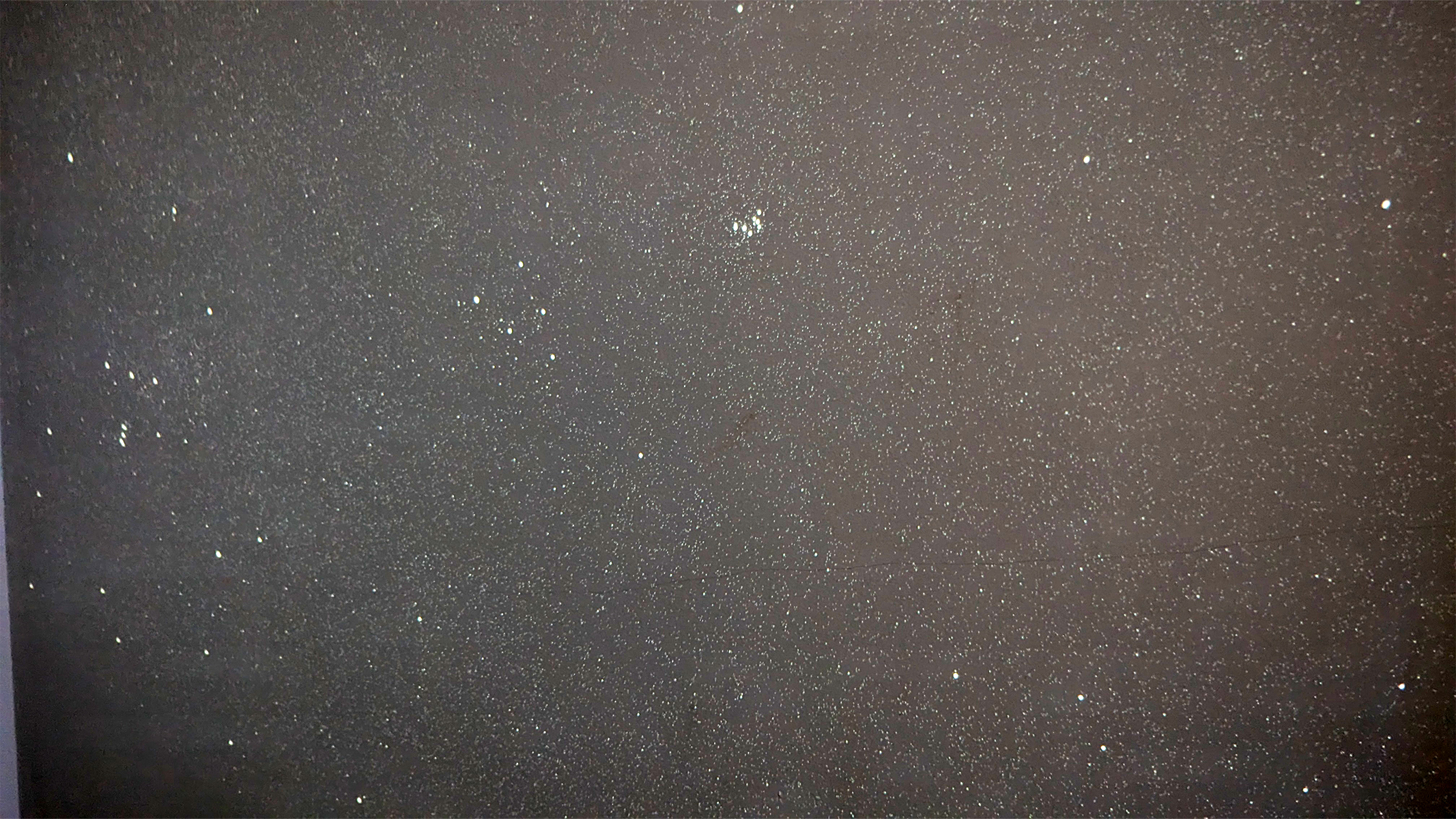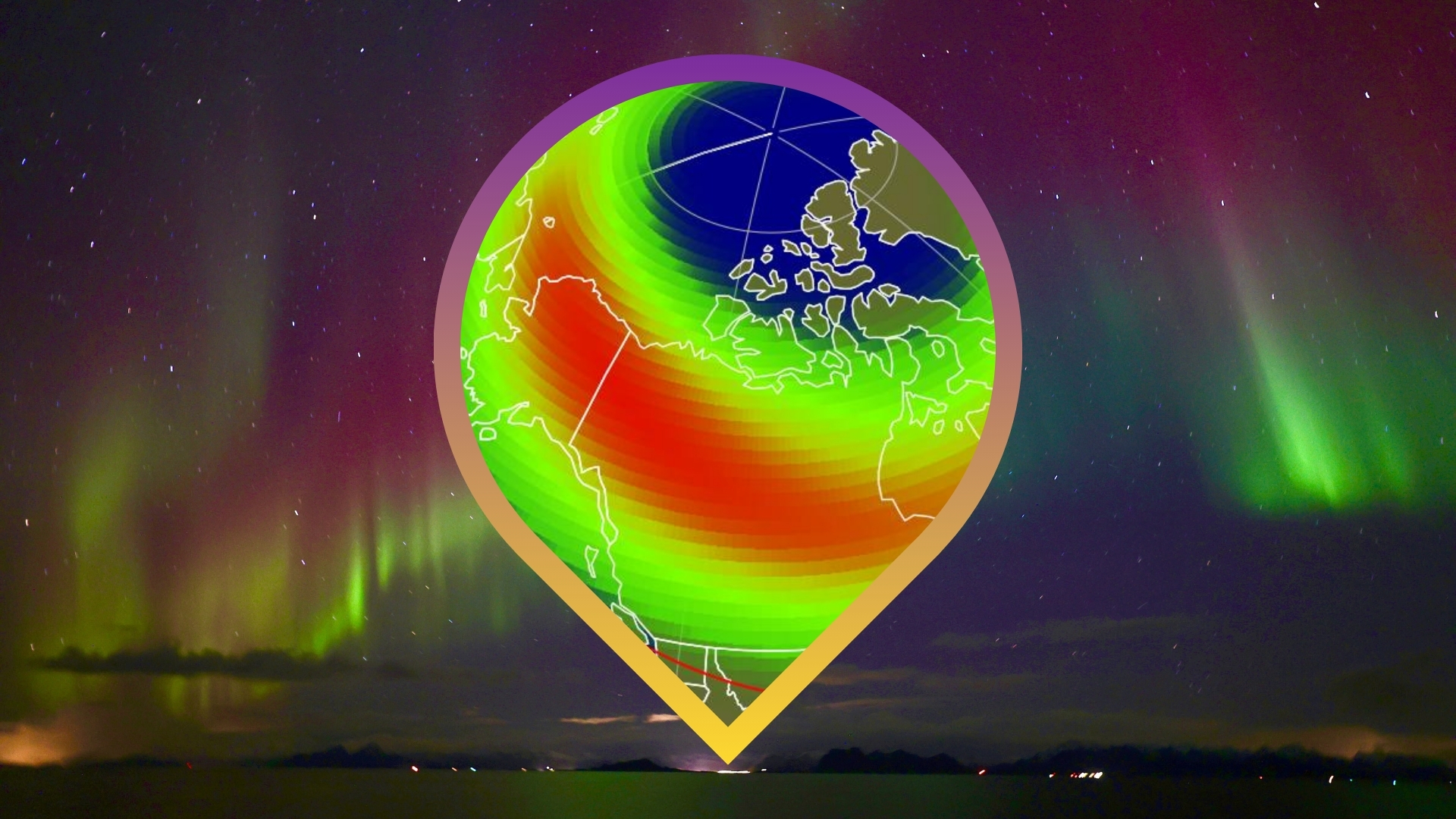Space Verdict
Dark Skys' DS-FX is a perfectly good star projector, with basic functionality to do exactly that. The images are bright and sharp, when pointed at the right angle, and the rotating motor is extremely quiet. There is little in it, in terms of performance between this and the Sega Homestars Matataki, although this unit is rechargeable.
Pros
- +
Near silent operation
- +
Very simple to use
- +
Rechargeable for flexibility
Cons
- -
Uses proprietary disks
- -
Only one disk is included
Why you can trust Space.com
We have already carried out hands-on reviews of a heap of best star projectors, and now it's the turn of Dark Skys' DS-FX. Released in 2023, it's relatively new to the market when compared with the ever-popular (but very expensive) Homestar Flux which was launched in 2018, and the Homestar Original, which was released way back in 2006. That said, there have been a lot of new models on the market in that time, and the competition is tough.
Size: 8.82 x 6.57 x 6.46 inches
Weight: 1.61 lb
Bulb Type: 5 Watt LED
Rotation: Yes
Sleep timer: Yes
Speaker: No
Projection Surface: 10 ft
'Star projectors' can be scientific tools for learning about, or enjoying the 'real' night sky. They can also be novelty devices that project 'space-inspired' lighting inside to create a space-like environment or other-worldly atmosphere indoors. The DS-FX is most aligned with the former description, using tiny projection slides to project life-like night-sky imagery indoors.
Let's see how it compares with other star projectors that we've reviewed and placed in our best star projectors guide, will it earn itself a spot?
Dark Skys DS-FX: Design

- Very simple user interface
- Compact unit
- Doesn't feel especially premium
The DS-FX star projector has a small form factor, similar in size to the majority of the best star projectors that utilize the pivoting spherical design. The stand, that rotates the globe is encased within the unit itself, which keeps everything looking neat.
In terms of touch, we'd describe it similarly to how we described the Matataki; it all feels 'fine', but it does have that plasticky, toy-like feel and aesthetic. Perhaps it's just missing the satin finish of the likes of the Homestar Flux we reviewed, or the pleasant in-hand experience of the Pococo Galaxy Star Projector. It's black and white so it would suit most decor.
The projector is operated using just three buttons — power, rotation and sleep timer, that sit on the front of the unit. Each button has an LED indicator to show it has been activated. The sleep timer's indicator has two colors, one for 30 minute and one for 60 minute mode.
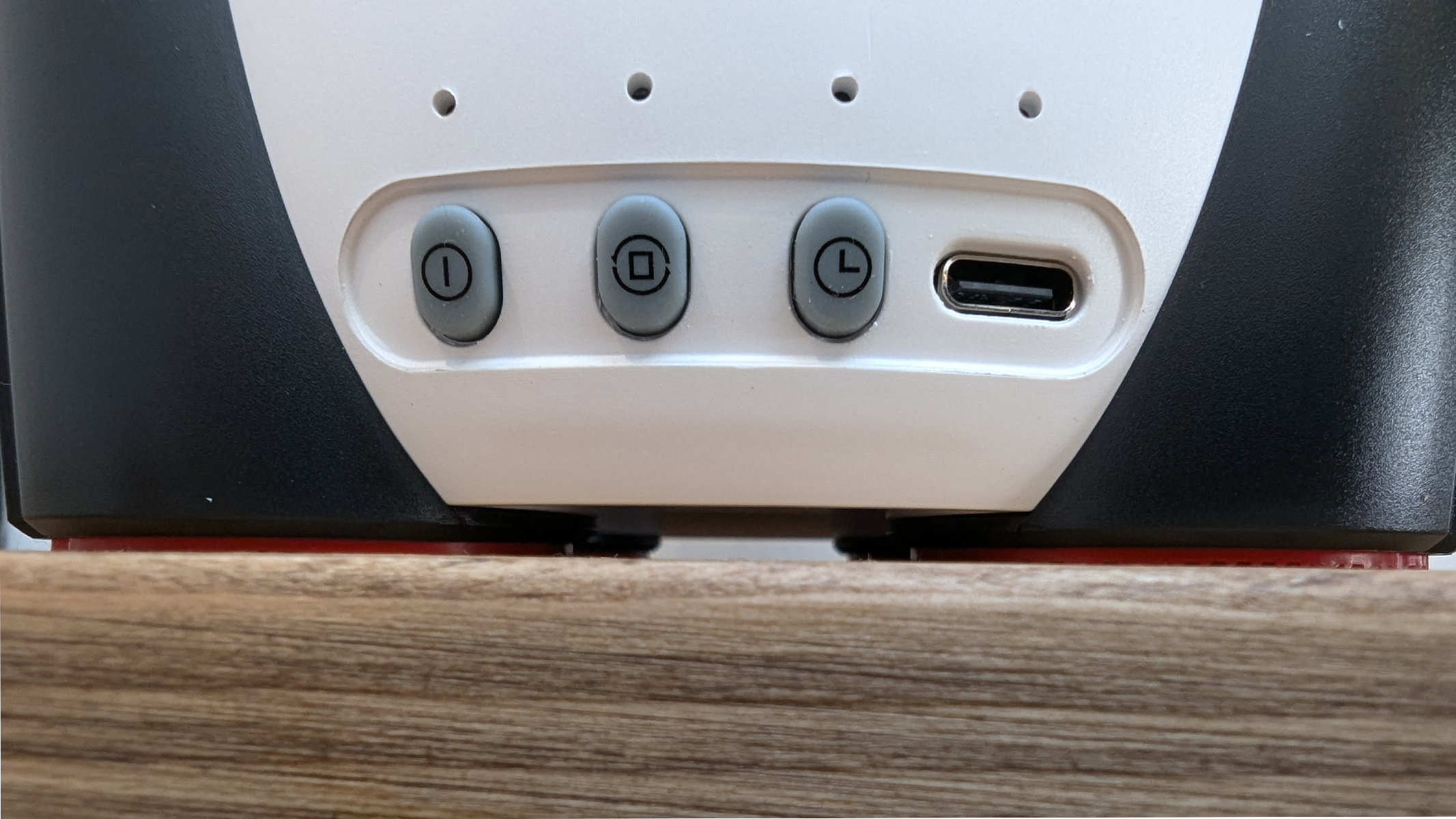
Like the models we've reviewed recently, the Pococo and the Sega Toys Homestar Matataki, the DS-FX projects an image from a little disk in a 'tray' that you slot into the unit. The difference here, however, is that the 'disk' cannot be removed from the tray, so it feels more like you're installing a cartridge. The unit only comes with one disk — the Northern Hemisphere chrome star disk, and others are available to purchase separately from Dark Skys website directly. We're not sure why Dark Skys decided to do this — it seems unnecessary to produce all of that extra plastic involved in producing not only the tray but a protective case for the tray. It also means you can't use disks from other projectors, should you be switching from one unit to another.
Breaking space news, the latest updates on rocket launches, skywatching events and more!
There are little 'feet' on the bottom of the unit that help keep it securely in place on slippy surfaces and prevent it from leaving any marks when you place it down (though it wouldn't do too much damage without them).

Dark Skys DS-FX: Performance
- Good brightness
- Extremely quiet motor
- Focus isn't always across the whole image
We initially tested this star projector during the day. Even with light seeping around the blinds, the image was plenty bright enough to be enjoyed. It won't get properly dark here in England for a good few months, but we're still confident this can be enjoyed year-round.
Although the unit pivots 0-degrees through 90-degrees, it's only when it is in one of these positions (i.e. pointing straight up, or horizontally) that the whole image remains in focus, in fairness, that's exactly what the Dark Skys website says it does. Anything else, and there is quite a lot of distortion around the edges. This means that to get the optimum image across your whole ceiling or wall, it ideally needs to be in the middle of the room or sitting on a shelf halfway up the wall.
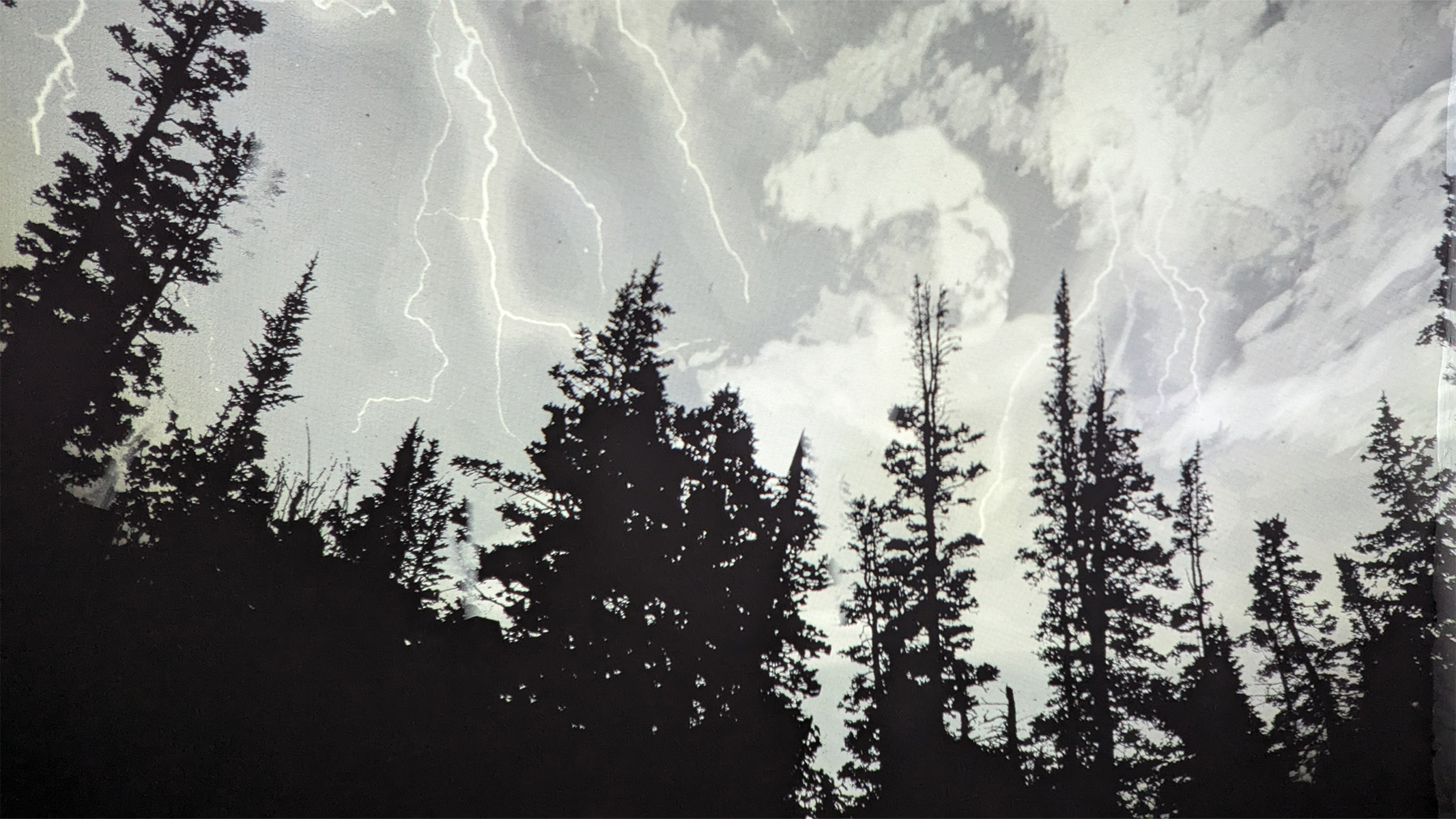
The rotation motor is extremely quiet, without looking at the projection, it's almost impossible to know whether it's turned on or not. Perfect if you're using it as a sleep aid.
Dark Skys DS-FX: Functionality
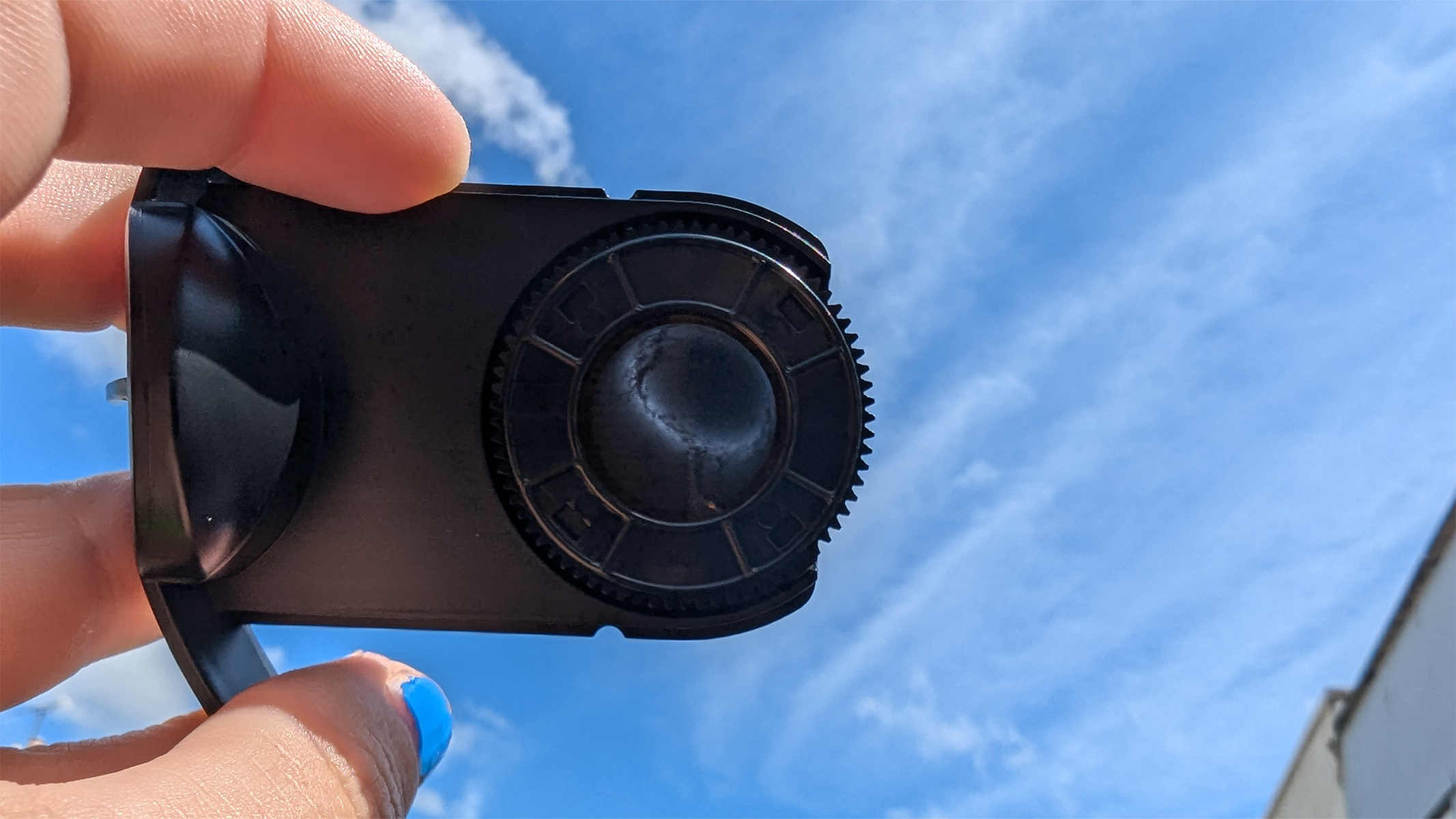
- Disks fixed into the disk tray
- Rechargeable with USB-C
- Basic, but purpose-built functionality
Unlike some star projectors that come with apps, smart control (like the BlissLights Sky Lite Evolve), voice control (like the Encalife Atmosphere) and speakers (like the National Geographic Astro Planetarium), the Dark Skys DS-FX has kept everything scaled back and simple. It only offers disk projection with a rotating motor (which can be turned off).
That said, it is one of only a handful of rechargeable star projectors, which gives positioning flexibility as you aren't limited by being near a power source. It's charged by USB-C, too, which is much more handy than the Sega Toys Matataki, which uses a somewhat dated DC power cable.
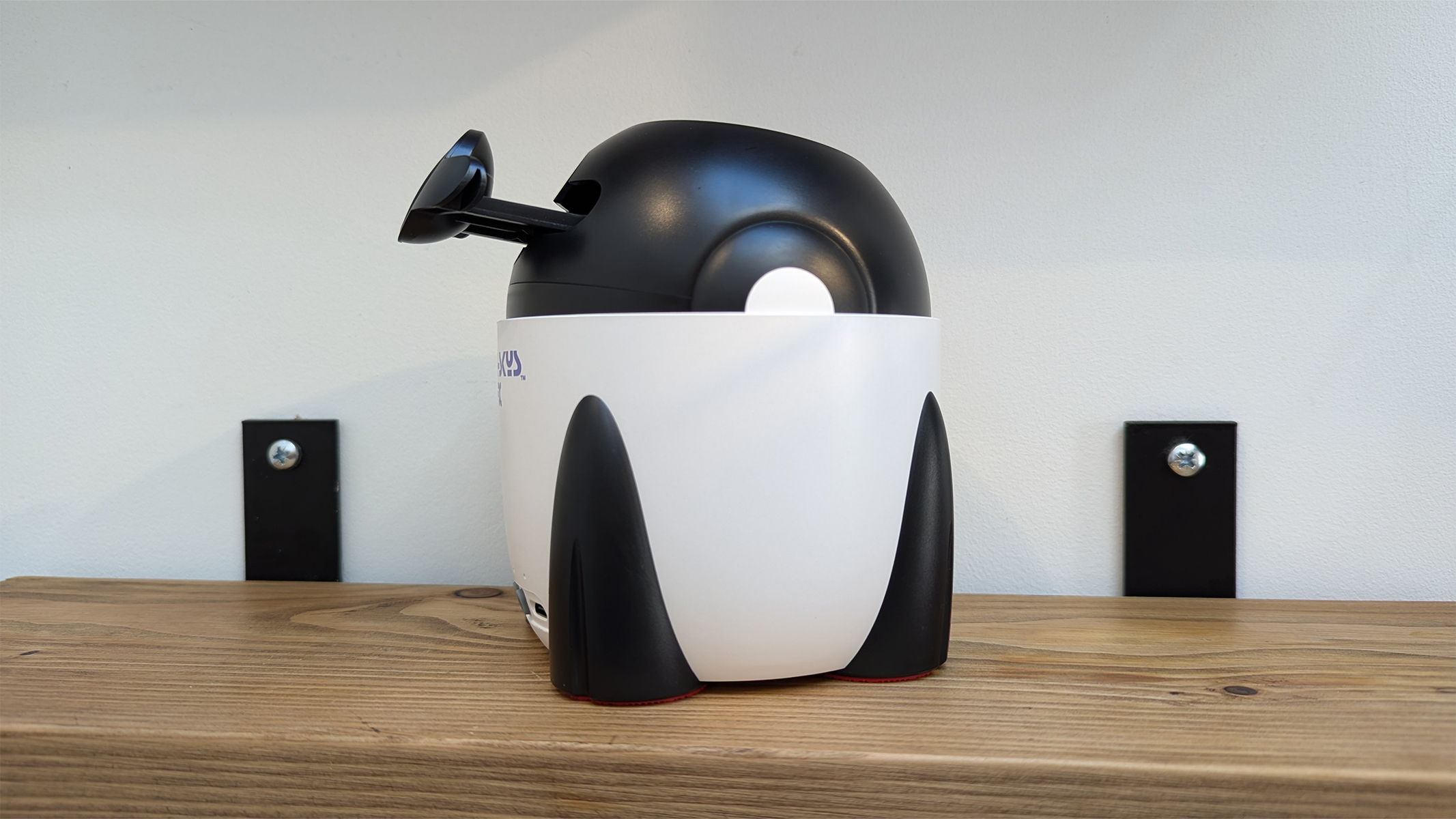
We've already mentioned that the projection disks can't be removed from their 'tray,' which means you can't use slides from other models. This is a little limiting as only Dark Skys products will work in it. A small selection of extra disks for the DS-FX projector cost around $20-$30 and are available from Dark Skys directly.
There are some projectors where the same disks can be used in more than one model, e.g., the Pococo Galaxy Disks fit in the Orzors Galaxy Lite Projector, and the Homestar Flux and Homestar Matataki disks can be used interchangeably.
Should I buy the Dark Skys DS-FX?
If you want a star projector that does just that — projects imagery onto a flat surface, then sure, the Dark Skys DS-FX star projector will tick that box. It's pretty much exactly the same price as the Homestar Matataki, and there's not really much between them functionality or performance-wise, but the Dark Skys DS-FX does benefit from being rechargeable. The images are bright and sharp enough to be enjoyed just as they are with more expensive models.
If you want to expand your disk collection, you are limited to a choice of only four disks. Models like the Pococo Galaxy Star Projector have much more choice. Not everyone wants to swap and change disks, though, so if you're happy with the Northern Hemisphere's Constellation, that needn't worry you.
If you aren't necessarily looking for a device to project images onto surfaces, but just want to create a 'space-like' environment with plenty of customization options, we'd happily recommend the BlissLights Sky Lite Evolve. It's a great projector that you can control using either the app or your voice and change the light combinations and patterns to suit your desired atmosphere. It's surprisingly cheap, too, considering the functionality within.
If you're looking for a space-themed projector that's not necessarily scientific, but more for fun and inspiration, we highly recommend the Astronaut Starry Sky Projector. It projects beautiful patterns and laser lights on the ceiling, and despite being a novelty model, it's of surprisingly good quality. At around $30, it's great value for money.
If you're throwing a space-themed party, consider the Encalife Aurora Borealis Northern Lights star projector. It is feature-rich and has a surprisingly good-quality built-in speaker. It also has a 'music rhythm mode' that makes the lights dance and 'match' the music—we thought that was pretty impressive!

Tantse Walter is a writer, photographer and travel enthusiast that has spent over a decade facilitating global adventurous expeditions. She loves getting into the nitty-gritty of sourcing and planning itineraries, getting out and about in nature, and admiring the night sky.
